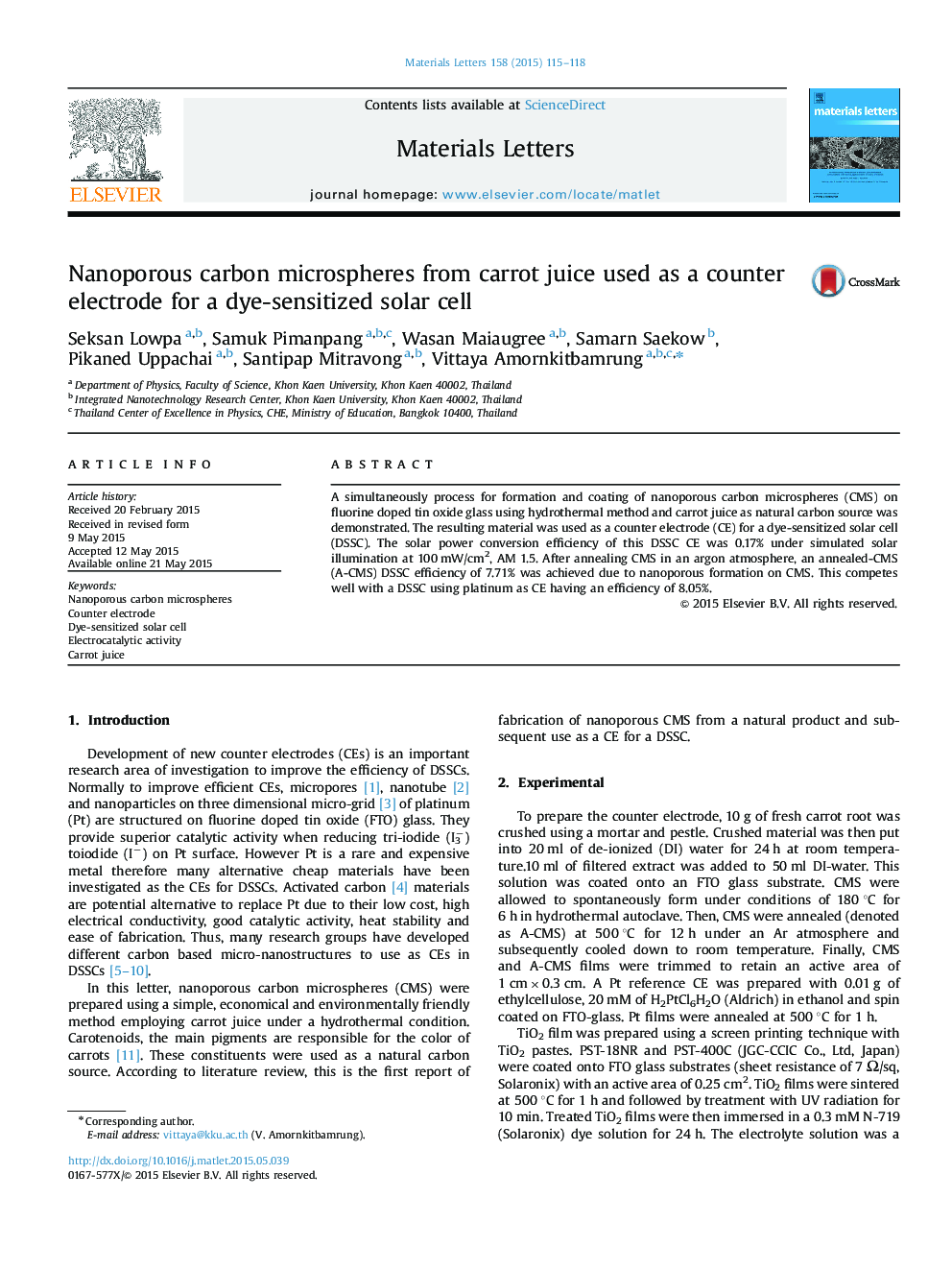| Article ID | Journal | Published Year | Pages | File Type |
|---|---|---|---|---|
| 1642363 | Materials Letters | 2015 | 4 Pages |
•Nanoporous carbon microspheres (CMS) were prepared by a hydrothermal method.•A-CMS electrode show a good catalytic activity with the I3−/I− electrolyte.•η of A-CMS DSSC (7.71%) compared to that of a Pt DSSC (8.05%).
A simultaneously process for formation and coating of nanoporous carbon microspheres (CMS) on fluorine doped tin oxide glass using hydrothermal method and carrot juice as natural carbon source was demonstrated. The resulting material was used as a counter electrode (CE) for a dye-sensitized solar cell (DSSC). The solar power conversion efficiency of this DSSC CE was 0.17% under simulated solar illumination at 100 mW/cm2, AM 1.5. After annealing CMS in an argon atmosphere, an annealed-CMS (A-CMS) DSSC efficiency of 7.71% was achieved due to nanoporous formation on CMS. This competes well with a DSSC using platinum as CE having an efficiency of 8.05%.
Graphical abstractFigure optionsDownload full-size imageDownload as PowerPoint slide
